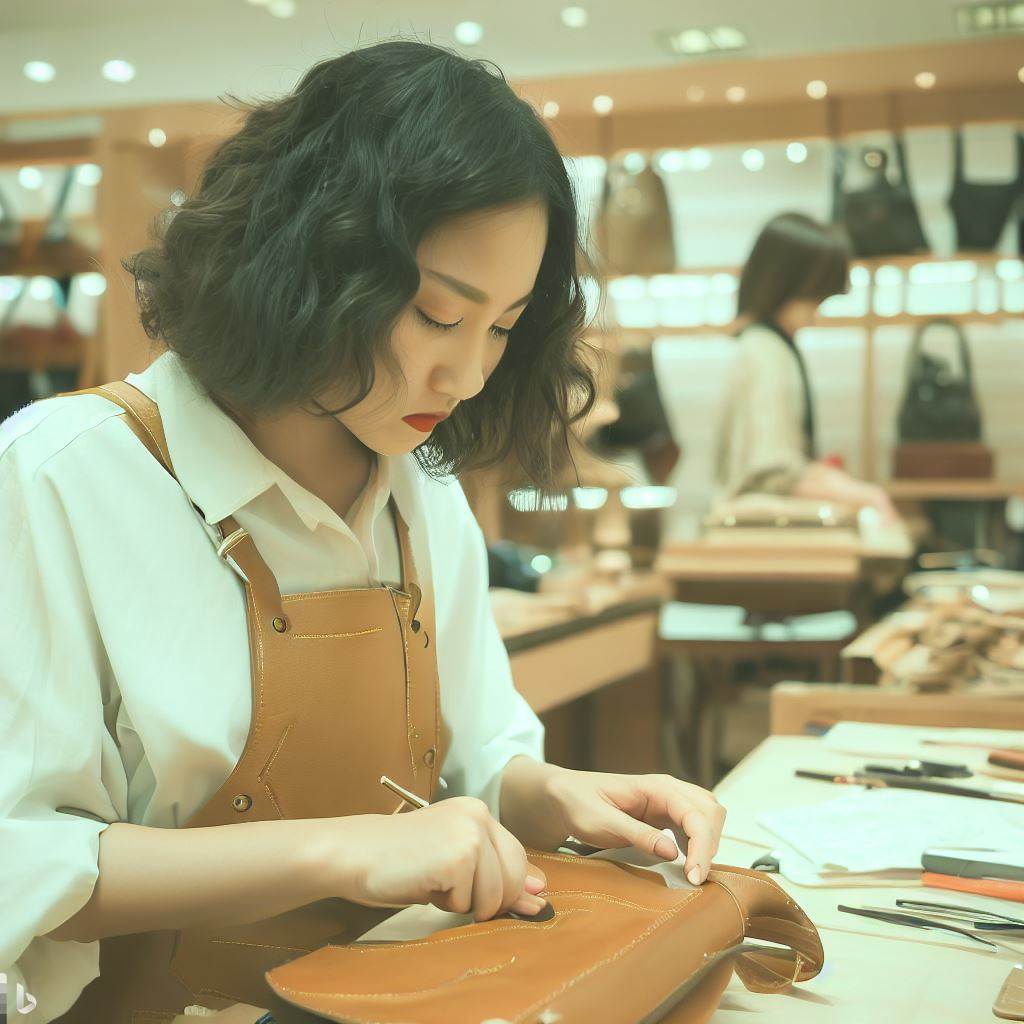The Journey of a Leatherworker: From Novice to Expert Craftsmanship
Introduction
Progressing from beginner to highly skilled leather artisan requires immense dedication through years of hands-on practice, mentorship, and deepening creativity. The journey to mastery demands patience and persistence through plateaus, but devotion pays dividends through increasing capability and meaningfulness.
In this guide, we walk through key milestones nearly all leather craftspeople experience on their developmental path, from initial fascination to cultivated expertise. Understanding normal challenges and gratifications at each stage helps new practitioners stay motivated. Relishing small wins and revelation moments propels personal growth. The journey itself becomes the reward when passion fuels a leatherworker’s long but fulfilling road to accomplished artistry.
Early Beginnings
Most leatherworkers recall how awe in childhood at seeing skilled saddlers or cobblers first sparked their eventual passion. Early exposure plants the seed.
Finding Initial Fascination
Watching local leather artisans caused many future leatherworkers’ first mesmerization with the craft. Some also gained initial inspiration from cultural demonstrations. The romance of leather ignites early.
Exposure Through Relatives or Mentors
Growing up observing family leather businesses often provides youth their introduction. For others, a chance to try simple projects under mentorship brings intrigue. These experiences stick as special memories.
Starting Simple Early Projects
Beginners worldwide typically attempt hand-stitched wallets, bracelets, or key fobs first through kits or classes. Simple starter successes build confidence and skills.
Feeling Pride Learning a Heritage Craft
Youth especially take pride mastering ancestral or cultural leather skills they realize connected generations before them. Leatherwork awakens identity.
Learning Basic Skills
Foundational competence arises through studying primary techniques and materials science before creative embellishment.
Progressing Througheach Step
Creating even simple designs demands proficiency in up to 30 sequential steps from patterning and skiving to final finishes and hardware. Competence at each phase takes repetition.
Understanding Leather’s Properties
Knowledge of various hides’ characteristics, the chemistry of tanning, and how techniques interact with leather allows matching methods and materials properly. Learning precedes innovating.
Mastering Essential Hand Stitches
Basic utility stitches like saddle stitching and backstitch deserve honing early for sturdy seams and edges. Dexterity develops through practice. Well-assembled basics surpass shoddy decoration.
Learning From Mistakes
Inevitably botched leather, failed stitches, and miscuts offer valuable troubleshooting lessons for new crafters about precision, material behaviors, and tool use. Analyzing errors improves techniques.
Finessing Skills Through Practice Pieces
Once comfortable with fundamentals, artisans undertake practice projects focused on progressively honing specific skills.
Expanding Tooling Techniques
Beyond basic impressions, leather stamping, carving, modeling, and hand-tooling benefit greatly from practice refining control on repetition pieces before applying these skills to fine work.
Tackling More Complex Stitching
Difficult stitches like saddlers’ knot stitching demand making numerous sampler swatches to master tension consistency. Practice builds dexterity before risking expensive hides.
Testing Decorative Skills
Pieces focused purely on applying finishes like dyeing, antiquing, or airbrushing allow competently handling these embellishments first before incorporating into bigger projects.
Analyzing and Evaluating Outcomes
Assessing each practice piece against exemplary benchmarks develops critical thinking crucial for improvement more than just garnering praise. Identifying shortcomings trains better design choices.
Gaining Fluency Through Frequent Practice
With core skills built, sustaining regular hands-on leatherworking helps develop fluid tacit abilities and personal style.
Developing “Hand Memory”
Through muscle memory, frequently performed stitches and tooling techniques become automatic, speeding leatherwork with precision. The hands gain their own fluency.
Establishing Work Rituals and Habits
Consistent creative rituals like setting studio moods or organization help maximize productivity and continuity. Familiar habits improve focus.
Speed Increasing With Proficiency
As competencies compound, executing projects accelerates. For example, patterning and assembly time decrease dramatically, freeing energy for creative aspects. Efficiency snowballs.
Discovering Personal Aesthetic
Regular practice clarifies individual visual and tactile sensibilities. A sense of personal style emerges rather than just following existing templates. Making frequently develops natural strengths.
Creativity and Design Maturation
With solid skills cultivated through perseverance, makers’ creative confidence blossoms into mature designs distinguished by cohesive vision.
Intuition Guiding Decisions
Technical considerations become automatic, allowing intuition to guide aesthetic choices. Holistic visual instincts elevate work beyond mechanical fabrication.
Conceptual Development in Designs
Beyond just attending to object appearance, personal perspective increasingly informs designs through integrated themes, emotions, or commentary. Making progresses craft into art.
Establishing a Signature Style
Work exudes identifiable personality reflecting the maker’s perspectives and passions. Their distinctive creative fingerprint becomes recognizable even in new designs.
Pride in Personal Growth
Seeing early amateur work juxtaposed with latest designs highlights personal progress. Compare to appreciate how far dedication and practice have elevated skills. Now making means fulfilling purpose.
Mastery and Expert Contributions
With maturity reached through years of honed skills and creativity, respected master leather artisans guide their craft’s future.
Intuition Over Attention
Deep tacit expertise allows effortlessly executing intricate techniques that once required intense focus, freeing awareness for higher aims. Hands work automatically.
Innovating and Elevating
Masters innovate new techniques and establish elevated benchmarks within their craft through award-winning pieces. Their example expands possibilities for all.
Instruction and Preservation
Teaching ensures heritage techniques pass forward. Masters personally train apprentices rather than just publishing instructions. Their methodology and philosophy perpetuate through learners.
Leadership and Inspiration
Expert veterans found guilds, mentor young artisans, judge competitions, author books, and financially support education to lead the field. Their wisdom inspires future generations.
Conclusion
Every master leather artisan traversed a long, challenging yet ultimately fulfilling creative bridge from fascinated novice to accomplished artist. Their sustained passion exemplifies leatherworking’s rewards through decades of small steps forward. By understanding typical milestones along the journey, emerging practitioners gain patience and perspective to support their own growth. While mastery demands commitment, inspiration from leatherworking legends keeps motivation strong. Each devoted practitioner eventually contributes to elevating leather art worldwide. Perseverance and legacy become interwoven, stitch by hand-stitched stitch.
